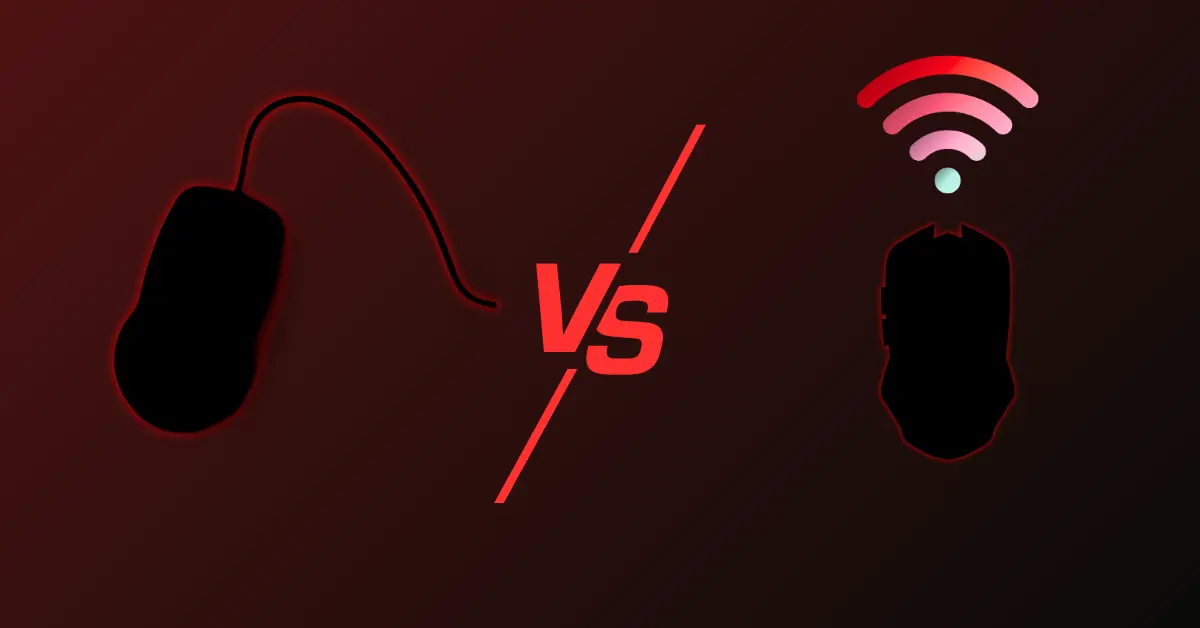Wired vs Wireless Gaming Mice: Key Differences and Performance Insights

Gaming mice play a key role in shaping the overall experience for players. Choosing between a wired or wireless mouse affects gameplay, as each type offers different benefits. Wired models tend to offer steady connections, while wireless ones provide greater freedom of movement.
Understanding these differences is important for finding the best fit. Testing and real-life use reveal valuable insights that help users pick the right gaming mouse for their needs.
Key Takeaways
- Gaming mice impact how players perform and enjoy games.
- Wired and wireless options each have unique advantages.
- Knowing specific features helps select the best mouse.
Important Points to Remember
- Wired gaming mice usually offer faster response times and a more steady connection. This is key for players who need precision and quick reactions.
- Wireless mice have greatly improved and can often match wired mice in speed and accuracy during most games.
- Choosing a mouse that fits well in the hand is crucial. Proper comfort can improve control and reduce fatigue during long gaming sessions.
- Battery life is an important factor for wireless mice. Some models last much longer than others, so players should check how long a mouse can run before needing a recharge.
- For fans of shooter games, selecting the best gaming mouse can significantly affect how well they perform.
Understanding the Differences

Defining Wired Gaming Mice
Wired gaming mice connect to the computer through a cable. This direct link provides a steady and reliable connection without worrying about battery life. Players often choose wired mice because they offer consistent power and quick response times. These mice are less likely to experience signal interference and are favored in fast-paced games where every moment matters.
Overview of Wireless Gaming Mice
Wireless gaming mice use radio waves or Bluetooth to connect to the computer without cables. Recent technology improvements have made these mice nearly as responsive and accurate as wired versions. They offer the advantage of freedom from cords, letting users move more easily. Battery life and potential signal delays were once problems, but modern wireless mice use better sensors and technology to minimize these issues. Many gamers now trust wireless mice for serious play due to their balance of convenience and strong performance.
| Feature | Wired Gaming Mice | Wireless Gaming Mice |
|---|---|---|
| Connection | Cable | Radio frequency or Bluetooth |
| Power source | Constant (via cable) | Battery-powered |
| Signal interference | Very low | Possible, but reduced |
| Mobility | Limited by cable length | Wireless, full freedom |
| Input lag | Minimal | Nearly the same now |
Performance Analysis and Latency Insights
Hands-On Latency Evaluations
Tests done in gaming environments show that input lag differences between top wired and wireless mice are usually very small. Gamers who focus on FPS games often seek gear with precise and reliable tracking. Controlled testing involves updating drivers, setting DPI for accurate tracking, and measuring input delay through specialized software. These trials reveal that many wireless mice perform nearly as well as wired ones. Gamers may find the difference unnoticeable during fast movements and aiming tasks, meaning choice often depends on comfort and style.
Technical Details and Delay Comparisons
Several technical elements influence mouse performance. Sensor precision, polling rates (measured in Hz), and software tuning play key roles. Wired mice commonly operate at a steady 1000Hz, giving consistent data updates. Modern wireless mice achieve similar or even higher rates using improved communication protocols. Although tiny latency gaps remain, their impact is marginal in most gaming settings.
| Feature | Wired Mouse | Wireless Mouse |
|---|---|---|
| Average Latency | About 1–3 milliseconds | About 1–4 milliseconds |
| Polling Frequency | Usually 1000Hz | Up to 1000Hz or above |
| Signal Interference | Very low | Minimal with current technology |
| Power Needs | None | Requires charging or batteries |
| Desk Setup | Wire management needed | Cable-free for cleaner setup |
This comparison helps gamers understand how technical specs translate to real performance. It highlights that both wired and wireless designs can deliver strong responsiveness, important for competitive PC gaming and demanding fast-paced gameplay.
Pros and Cons Discussion
Advantages and Disadvantages of Wired Mice
Wired mice provide a steady and reliable connection because they draw power directly from the computer. This eliminates any chance of battery failure during use. Their design often results in lower input lag, which helps players who need precise and fast responses.
| Strengths | Weaknesses |
|---|---|
| Steady power source | Cable can drag, affecting movement |
| Lower chance of lag | Movement range limited by cord |
| No need for charging | Cable can wear out over time |
| Generally more affordable | Less portable due to cable |
The cable can sometimes limit the freedom of movement, especially if it is tangled or not arranged well. Over time, the cord may suffer wear and tear, which might cause connection problems. Despite this, many users appreciate wired mice for their consistent performance.
Strengths and Drawbacks of Wireless Mice
Wireless mice offer more flexibility because they don’t have a cord holding them back. This makes the desk less cluttered and allows for easier, faster movements. Many wireless models now have good battery life and quick response times, which help reduce interruptions.
| Advantages | Disadvantages |
|---|---|
| No cable, less desk clutter | Need to manage battery life |
| Greater freedom of movement | Possible slight delays on cheaper models |
| Advanced settings available | Higher price than wired mice |
| Improved battery performance | Risk of signal interference |
However, wireless mice depend on battery power, so users must monitor battery life to prevent sudden shutdowns. Some interference from other wireless devices can occasionally affect the connection. Despite these challenges, players who value convenience and range often prefer wireless mice.
Both wired and wireless mice have clear benefits and limits. The best choice depends on individual preferences like convenience, connection stability, and how much freedom of movement is needed.
Comfort and Personal Fit
Physical Comfort
A gaming mouse that fits well can reduce strain during long sessions. Wired mice often provide sturdy support for the hand, which helps players stay steady when playing. Wireless options typically focus on being light to lower wrist tiredness. Adjustable weights in many models give users a way to change how heavy or light the mouse feels. Choosing a mouse built for certain grip styles, like palm or claw grip, helps ensure the device matches how a player holds it. Trying different models is a good way to find the best fit, since comfort varies from person to person.
Tailoring Features
Custom settings help players adjust their mouse to their needs. Many mice come with software that lets users set the sensor speed, known as DPI or CPI, to suit their style of play. Creating different profiles for various games or tasks allows quick switching depending on the situation. Some mice have programmable buttons users can assign to specific commands or macros, saving time during gameplay. RGB lighting is often adjustable too, letting players pick colors or effects for a personal look. Firmware updates improve the device over time with fixes or new options.
| Customization Options | Purpose |
|---|---|
| DPI/CPI Adjustment | Change cursor speed |
| Button Programming | Assign extra commands |
| Profiles | Save game-specific settings |
| RGB Lighting | Personal color and lighting effects |
| Firmware Updates | Enhance features and fix problems |
Following these steps helps players get the most from their mouse settings and improve their overall control.
Buying Tips and Maintenance Advice
Choosing the Right Mouse
When selecting a gaming mouse, users should think about the type of games they play. Fast-paced shooters need quick response times and precise control, while strategy games might allow for more relaxed, comfortable designs. Budget is also important; wireless mice often cost more than wired ones, so balance price with features.
Trying the mouse in person helps decide which feels best. Visit stores or gaming events to test different models. Reading trusted reviews from reliable sources and user feedback can give practical insights about performance and durability. For a complete setup, looking at guides that cover other gaming gear can be useful.
How to Care for a Gaming Mouse
Proper care extends a gaming mouse’s life and keeps it working well. Wipe the mouse and sensor regularly with a soft cloth to remove dust. Avoid letting cable wires get twisted or bent if the mouse is wired. Tools like cable clips can help prevent damage.
For wireless mice, keep batteries charged and have spares ready if needed. Many devices alert the user when power is low. It is important to check the manufacturer’s website or software every month for firmware updates. These updates often solve problems and improve how the mouse works.
Store the mouse away from dust when not in use, and use a mouse pad to protect its bottom surface. Regular cleaning and careful use maintain sensor accuracy and response speed.
| Maintenance Task | Recommended Frequency | Tools or Tips |
|---|---|---|
| Clean surfaces and sensor | Weekly | Soft microfiber cloth |
| Check and manage cables | Daily | Anti-tangle clips |
| Charge batteries | Before low battery alert | Keep extra batteries if possible |
| Firmware updates | Monthly | Manufacturer’s software/website |
| Proper storage | Always after use | Dust-free space, mouse pad |
Final Thoughts
Choosing between wired and wireless gaming mice depends on what matters most: speed or freedom. Each option has clear benefits and small compromises. Players should weigh factors like responsiveness and comfort carefully to find the best fit. Using well-tested gear and trusted advice can help improve gameplay and suit individual needs.






